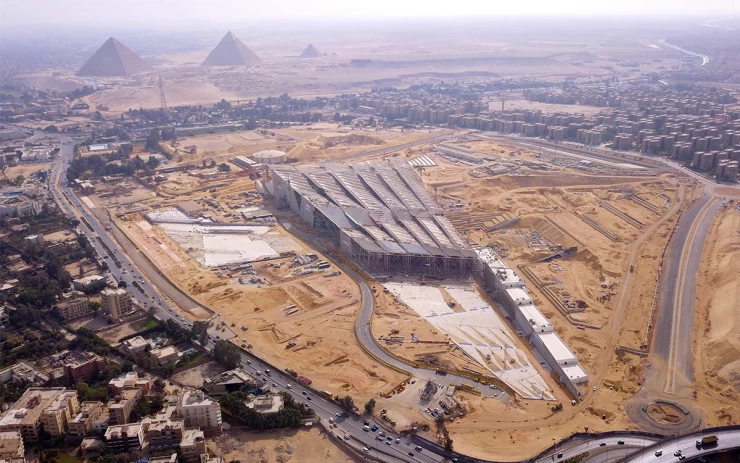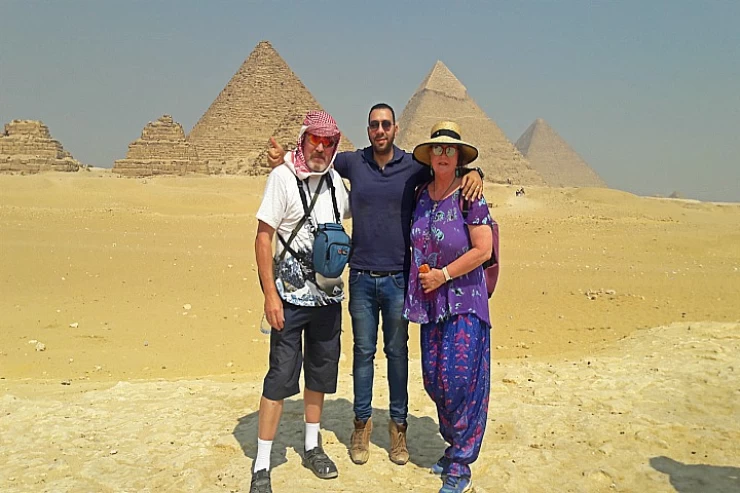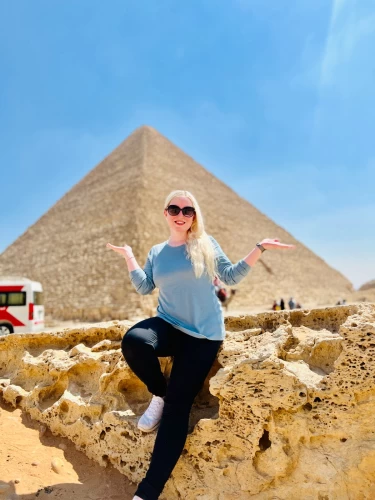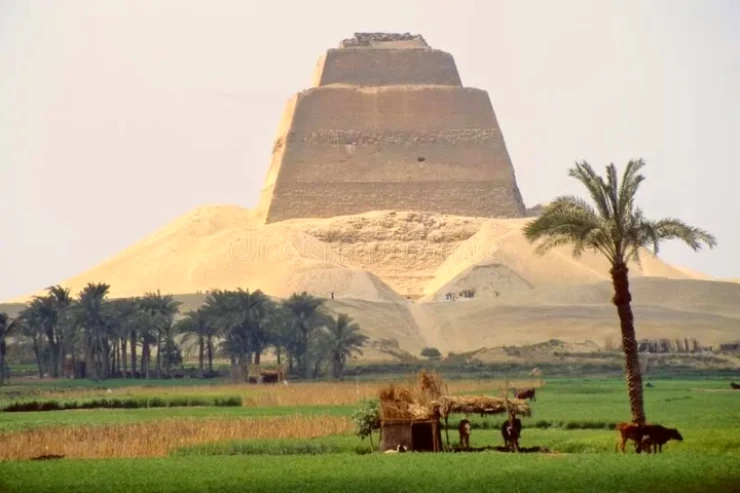
Re Chephren | Khafra
Re Chephren
Re Chefren, figlio di Cheope:
È il secondo figlio regnante del re Cheope tornato nella Necropoli di Giza per costruire lì la seconda piramide più grande che puoi vedere completamente da varie angolazioni durante il tour alle Piramidi di Giza, questa gigantesca struttura è purtroppo oscurata dal lavoro di suo padre.
Khafra
Il re Chephren costruì la sua piramide rispettivamente più piccola della grande piramide di Cheope sullo stesso altopiano dove i re della IV dinastia costruirono meraviglie architettoniche così senza precedenti che anche i loro brevi successori non furono in grado di ripetere.
La moglie di Khafre era Hekenuhedjet. Nella tomba del figlio Sekhemkare viene menzionata. Il sito della sua tomba suggerisce che Present fosse la moglie di Khafre. La madre di Nikaure era lei.
Re Chefren della quarta dinastia dell'Antico Regno nell'antico Egitto governò dopo il fratello maggiore Djedefre, che costruì la sua piramide ad Abo Rawash, apparentemente intorno al 2570 a.C.
Assunse il potere per più di vent'anni (quasi 26 anni) e gli successe il figlio, il costruttore dell'ultima piramide di Giza, Micerino.
Lo storico e archeologo greco Manetho affermò che a Khafre successe poco dopo un faraone chiamato Bikheris, ma non si conoscono molte informazioni su questo monarca. Non ci sono iscrizioni o menzioni nel papiro Westscar per dirci di più sul successore di Khafre. tuttavia, diversi manufatti scoperti di recente attestano che Menkaure era il diretto successore di suo padre.
Khafre è noto anche come Khefren, o Chephren, che è una corruzione dell'antico nome egizio del faraone da parte dei greci che trovavano difficile usare la parola egiziana per pronunciare il nome del re, il nome greco fu adottato dall'uomo inglese successivamente.
Durante il regno di Chefren, una scultura fece progressi significativi, così che sebbene molte delle sue statue siano già state riciclate nell'antichità, abbiamo ancora diverse immagini di questo sovrano potente e sicuro di sé. Tuttavia, è grazie al volto della sfinge che Chephren è universalmente conosciuto. La Sfinge, con il suo corpo di leone e la testa dell'uomo, che avrebbe dovuto raffigurare i simboli della regalità e del sole, fu scolpita nella roccia viva per fare la guardia lungo la rampa che conduceva alla piramide di Chefren, era noto per essere una ditta righello. Chiuse molti dei templi d'Egitto, seguendo la tendenza avviata da suo padre, il re Cheope.
La piramide di Chephren era destinata a essere l'ultima delle grandi piramidi. Suo figlio ed erede, Micerino, si accontentò di una costruzione decisamente meno imponente; la sua piramide è circa un decimo di quella del nonno ed è alta solo 66 metri.
Puoi esplorare le piramidi di Giza e la Grande Sfinge a Giza durante i tour in Egitto e il tour delle piramidi dall'aeroporto del Cairo.
per la sua piramide è divintato un re molto famoso nella vità dei faraoni, e anche la sua piramide divinta tra lr 7 miravigli del mondo quindi non dovete perdere l'opportunità di visitale le piramidi dell'Egitto, e la nostra azienda ti aiutira a goderti un viaggio di un giorno al Cairo per guardare la storia egizia con una guida toristica che ti aiutira a sapere le informazioni e le spiegazioni della costruzioni della piramidi.
Prenotate il vostro viaggio con Cairo Top Tours e godetevi la vostra vacanza conoscendo la storia di una delle meraviglie del mondo.
King Chephren, son of Cheops:
He is the second reigning son of King Cheops, who returned to the Giza Necropolis to build the second biggest pyramid. You can view it fully from various angles during the tour of the Giza Pyramids; this gigantic structure is unfortunately overshadowed by the work of his father.
Even if the Pyramid of Khafra is smaller than the Great Pyramid of Khufu, it appears taller, as it was erected at a higher location. Originally, it had a height of 143.5 m (471 ft), and it still preserves some of its original casing stones on the tip of the pyramid, providing a view of how these pyramids would have appeared to the people of antiquity. This kingdom consists of a well-maintained Valley Temple, where amazing diorite statues of Khafra were found.
King Chephren of the fourth dynasty of the Old Kingdom in ancient Egypt ruled after his elder brother Djedefre, who built his pyramid in Abo Rawash apparently around 2570 B.C. He assumed power for more than twenty years (almost 26 years) and was succeeded by his son, the builder of the last pyramid in Giza, Mycerinus.
During the reign of Chephren, sculpture made significant progress, so although many of his statues have already been recycled in antiquity, we still have several images of this powerful and self-confident ruler. However, it is thanks to the face of the sphinx that Chephren is universally known. The Sphinx, with its lion body and man's head, which was supposed to depict the symbols of royalty and the sun, was carved into the living rock to stand guard along the ramp leading to the pyramid of Khafre; he was known to be a firm ruler. He closed down many of the temples in Egypt, following the trend started by his father, King Cheops.
The pyramid of Chephren was destined to be the last of the great pyramids. His son and heir, Mycerinus, was satisfied with a decidedly less imposing construction; his pyramid is about a tenth of that of his grandfather and is only 66 meters high. Without worrying about how to understand the key terms of Egyptian history, we will see an Egyptologist guide, who will meet your expectations.


















